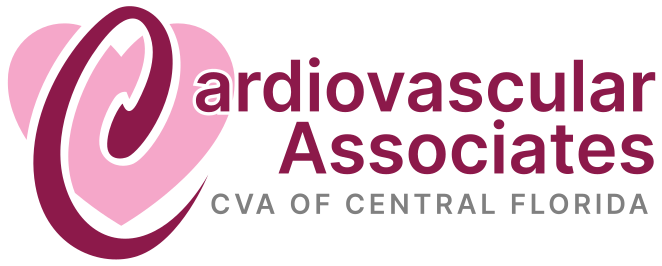Angina
What Causes Severe Chest Pain or Pressure?
Angina (chest pain or pressure) develops when the coronary arteries, which supply oxygen-rich blood to the heart muscle, become narrowed or blocked by fatty plaque deposits. This restricts blood flow to the heart. When the heart's demand for oxygen exceeds the restricted blood supply, it can trigger pain and discomfort. There are two main types of angina:
- Stable Angina
With stable angina, chest pain and discomfort consistently occur during periods of increased exertion or stress (when the heart's demand for oxygen rises). Activities like exercise, climbing stairs, or experiencing strong emotions can trigger angina symptoms. However, the discomfort is predictable and reversible. It typically subsides within 5 minutes of resting or taking angina medication.
Stable angina pain often feels like a pressure, squeezing, tightness, or aching sensation in the chest. It can sometimes radiate to the jaw, neck, shoulders, arms, or back. The location and intensity are generally consistent with each episode. While not immediately life-threatening, stable angina indicates underlying coronary artery disease is restricting blood supply to the heart muscle. - Unstable Angina
Unstable angina is characterized by sudden, unexpected chest pain and discomfort occurring even at rest. Unlike stable angina, it can occur with minimal exertion or stress. Unstable angina can wake a person from sleep and tends to be more severe and prolonged than stable angina pain.
Unstable angina indicates significant blockages in the blood vessels supplying the heart - often from a fresh blood clot forming over a plaque deposit in an artery or significant narrowing of the plaque. It signifies a high risk that a heart attack is imminent if treatment is not sought promptly. Unstable angina requires emergency medical care.
The unpredictable, intense nature of the pain differentiates unstable angina. Its emergence at rest is a warning sign of impending heart attack. Unstable angina is considered a medical emergency requiring rapid treatment to restore adequate blood flow and prevent heart muscle damage.
Angina Symptoms
The symptoms of angina typically come on when the heart is working harder than usual, such as during physical activity or emotional stress. They may also be brought on by cold weather, eating a large meal, or smoking and can vary from person to person.
Symptoms of Angina
- Chest pain
This is the most common symptom of angina. The pain is usually described as a squeezing, pressure, or fullness in the chest. It may also radiate to the arms, neck, jaw, or back. - Shortness of breath
This can occur with or without chest pain. - Nausea
Some people with angina may feel nauseated or vomit. - Lightheadedness
This can occur if the heart is not getting enough oxygen. - Fainting
This is a serious symptom of angina and requires immediate medical attention.
Testing & Diagnosis for Angina
The treatment for angina depends on the severity of the condition and the patient's overall health. In some cases, lifestyle changes may be enough to control angina. In other cases, medications, and procedures such as angioplasty or surgery may be necessary. With proper treatment, most people with angina can live a normal, active life.
- Lifestyle changes
Making lifestyle changes, such as losing weight, eating a healthy diet, exercising regularly, cutting back on alcohol, and quitting smoking, can help reduce the risk of angina and improve overall heart health. - Medication
There are a number of medications that can help control angina, including nitroglycerin, beta-blockers, and calcium channel blockers. - Angioplasty
Angioplasty is a procedure that uses a balloon to widen a narrowed coronary artery. A thin tube is inserted into a blood vessel in the arm or leg and threaded up to the heart. A balloon is inflated at the narrowed area of the artery to widen it. - Coronary artery bypass grafting (CABG)
Coronary artery bypass grafting is a surgery that creates a new path for blood to flow to the heart. This is done by taking a blood vessel from another part of the body and grafting it onto the coronary artery.
Treatments for Angina
The treatment for angina depends on the severity of the condition and the patient's overall health. In some cases, lifestyle changes may be enough to control angina. In other cases, medications or surgery may be necessary. With proper treatment, most people with angina can live a normal, active life.
- Lifestyle changes
Making lifestyle changes, such as losing weight, eating a healthy diet, exercising regularly, and quitting smoking, can help to reduce the risk of angina and improve overall heart health. - Medication
There are a number of medications that can help to control angina, including nitroglycerin, beta-blockers, and calcium channel blockers. - Coronary artery bypass grafting (CABG)
Coronary artery bypass grafting is a surgery that creates a new path for blood to flow to the heart. This is done by taking a blood vessel from another part of the body and grafting it onto the coronary artery. - Angioplasty
Angioplasty is a procedure that uses a balloon to widen a narrowed coronary artery. A thin tube is inserted into a blood vessel in the arm or leg and threaded up to the heart. A balloon is inflated at the narrowed area of the artery to widen it.
Photo Gallery
Video Gallery
Testimonials
Photo Gallery
Meet Your Cardiovascular Specialists
In Search of Care? Request a Consultation Today


 Fax: 407-846-2524
Fax: 407-846-2524
